Agata Mosinska
GLAMpoints: Greedily Learned Accurate Match points
Aug 19, 2019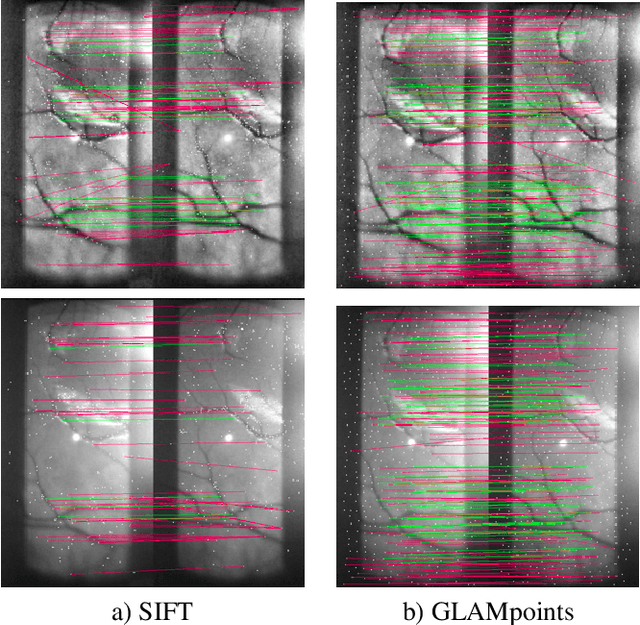
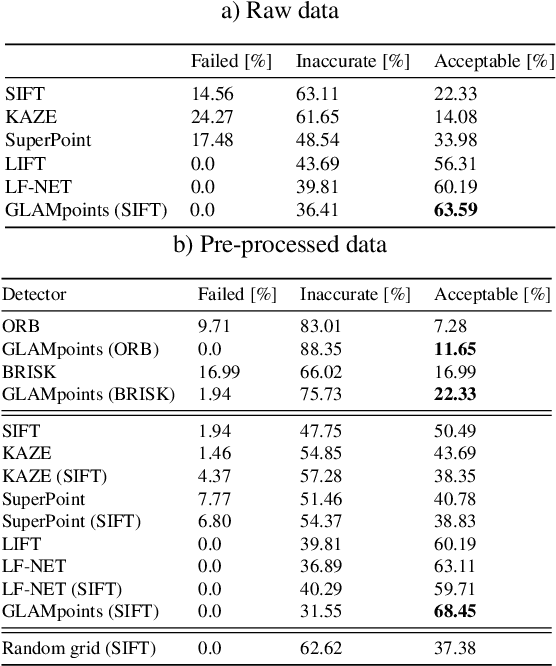

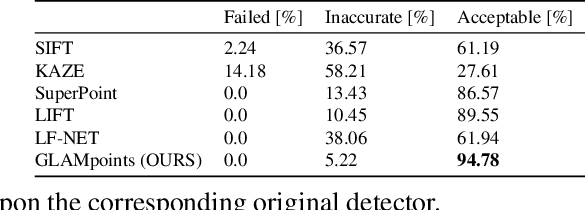
Abstract:We introduce a novel CNN-based feature point detector - GLAMpoints - learned in a semi-supervised manner. Our detector extracts repeatable, stable interest points with a dense coverage, specifically designed to maximize the correct matching in a specific domain, which is in contrast to conventional techniques that optimize indirect metrics. In this paper, we apply our method on challenging retinal slitlamp images, for which classical detectors yield unsatisfactory results due to low image quality and insufficient amount of low-level features. We show that GLAMpoints significantly outperforms classical detectors as well as state-of-the-art CNN-based methods in matching and registration quality for retinal images.
Joint Segmentation and Path Classification of Curvilinear Structures
May 09, 2019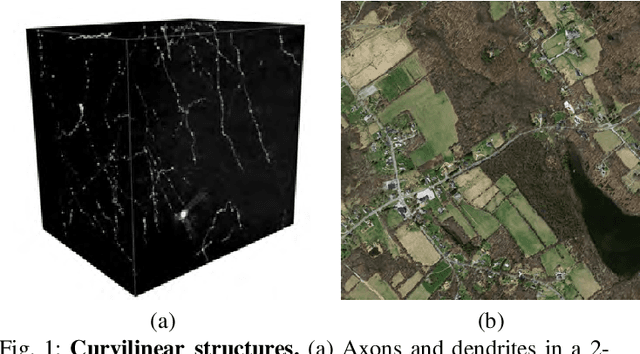
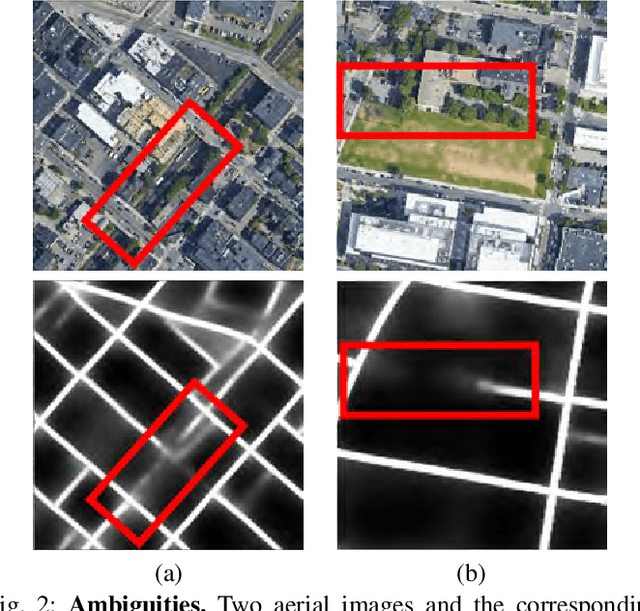
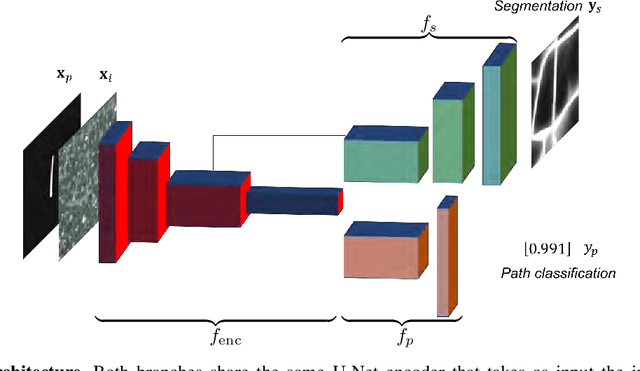

Abstract:Detection of curvilinear structures in images has long been of interest. One of the most challenging aspects of this problem is inferring the graph representation of the curvilinear network. Most existing delineation approaches first perform binary segmentation of the image and then refine it using either a set of hand-designed heuristics or a separate classifier that assigns likelihood to paths extracted from the pixel-wise prediction. In our work, we bridge the gap between segmentation and path classification by training a deep network that performs those two tasks simultaneously. We show that this approach is beneficial because it enforces consistency across the whole processing pipeline. We apply our approach on roads and neurons datasets.
Tracing in 2D to Reduce the Annotation Effort for 3D Deep Delineation
Nov 26, 2018


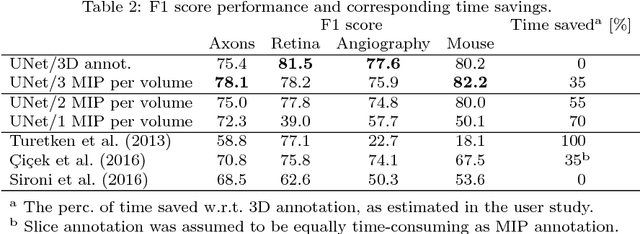
Abstract:The difficulty of obtaining annotations to build training databases still slows down the adoption of recent deep learning approaches for biomedical image analysis. In this paper, we show that we can train a Deep Net to perform 3D volumetric delineation given only 2D annotations in Maximum Intensity Projections (MIP). As a consequence, we can decrease the amount of time spent annotating by a factor of two while maintaining similar performance. Our approach is inspired by space carving, a classical technique of reconstructing complex 3D shapes from arbitrarily-positioned cameras. We will demonstrate its effectiveness on 3D light microscopy images of neurons and retinal blood vessels and on Magnetic Resonance Angiography (MRA) brain scans.
Beyond the Pixel-Wise Loss for Topology-Aware Delineation
Dec 06, 2017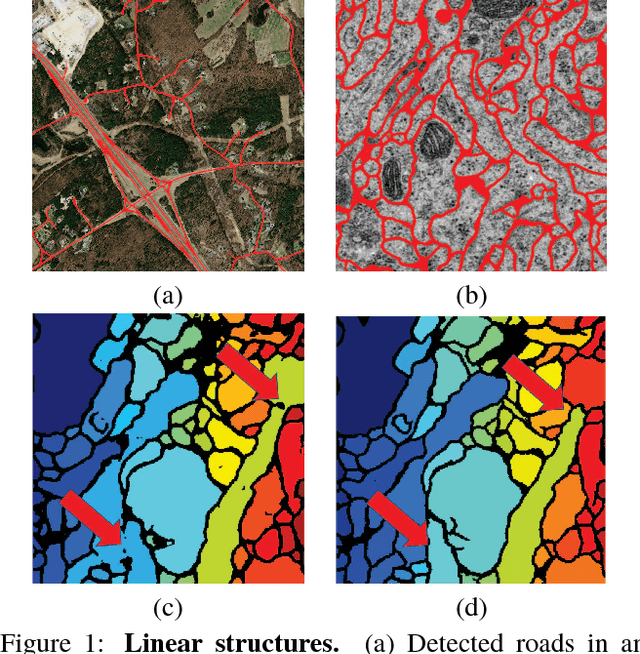


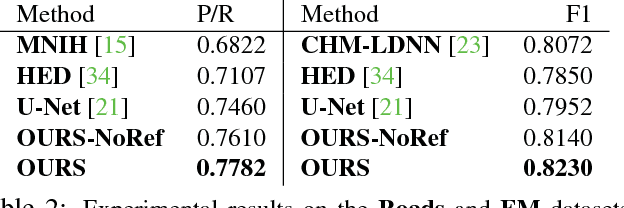
Abstract:Delineation of curvilinear structures is an important problem in Computer Vision with multiple practical applications. With the advent of Deep Learning, many current approaches on automatic delineation have focused on finding more powerful deep architectures, but have continued using the habitual pixel-wise losses such as binary cross-entropy. In this paper we claim that pixel-wise losses alone are unsuitable for this problem because of their inability to reflect the topological impact of mistakes in the final prediction. We propose a new loss term that is aware of the higher-order topological features of linear structures. We also introduce a refinement pipeline that iteratively applies the same model over the previous delineation to refine the predictions at each step while keeping the number of parameters and the complexity of the model constant. When combined with the standard pixel-wise loss, both our new loss term and our iterative refinement boost the quality of the predicted delineations, in some cases almost doubling the accuracy as compared to the same classifier trained with the binary cross-entropy alone. We show that our approach outperforms state-of-the-art methods on a wide range of data, from microscopy to aerial images.
Active Learning and Proofreading for Delineation of Curvilinear Structures
Mar 13, 2017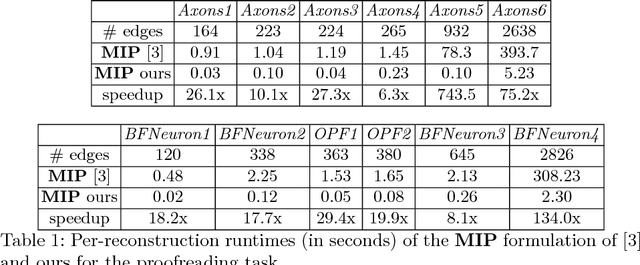


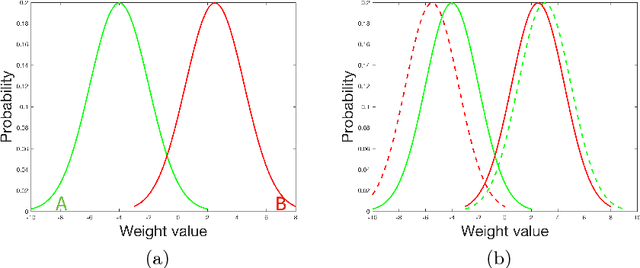
Abstract:Many state-of-the-art delineation methods rely on supervised machine learning algorithms. As a result, they require manually annotated training data, which is tedious to obtain. Furthermore, even minor classification errors may significantly affect the topology of the final result. In this paper we propose a generic approach to addressing both of these problems by taking into account the influence of a potential misclassification on the resulting delineation. In an Active Learning context, we identify parts of linear structures that should be annotated first in order to train a classifier effectively. In a proofreading context, we similarly find regions of the resulting reconstruction that should be verified in priority to obtain a nearly-perfect result. In both cases, by focusing the attention of the human expert on potential classification mistakes which are the most critical parts of the delineation, we reduce the amount of required supervision. We demonstrate the effectiveness of our approach on microscopy images depicting blood vessels and neurons.
* extended version with fast reconstruction
Active Learning for Delineation of Curvilinear Structures
Dec 02, 2015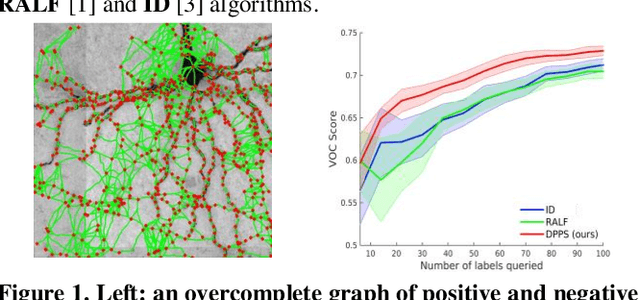
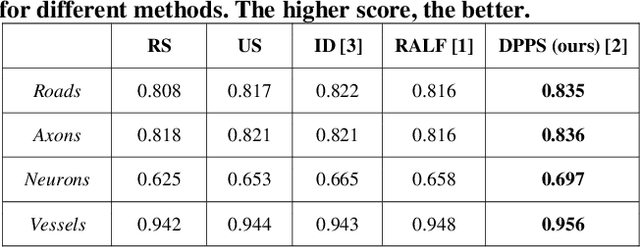
Abstract:Many recent delineation techniques owe much of their increased effectiveness to path classification algorithms that make it possible to distinguish promising paths from others. The downside of this development is that they require annotated training data, which is tedious to produce. In this paper, we propose an Active Learning approach that considerably speeds up the annotation process. Unlike standard ones, it takes advantage of the specificities of the delineation problem. It operates on a graph and can reduce the training set size by up to 80% without compromising the reconstruction quality. We will show that our approach outperforms conventional ones on various biomedical and natural image datasets, thus showing that it is broadly applicable.
 Add to Chrome
Add to Chrome Add to Firefox
Add to Firefox Add to Edge
Add to Edge